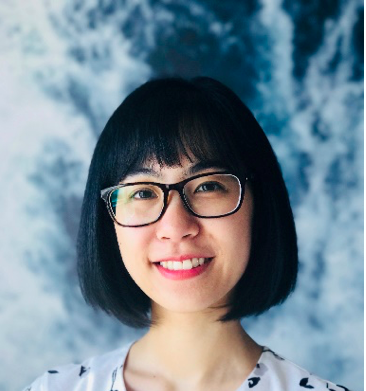USING DRAWINGS TO UNDERSTAND PERCEPTIONS AND EXPERIENCES OF ASTHMA
 |
Dr Melissa Cheung
Research Fellow, Children’s Hospital Westmead Clinical School, Faculty of Medicine and Health, The University of SydneyMelissa is a Research Fellow at the University of Sydney Children’s Hospital Westmead Clinical School, working in the area of Fetal Alcohol Spectrum Disorder. She completed a Bachelor of Pharmacy (Honours Class I) at the University of Sydney in 2013. After obtaining registration as a Pharmacist, Melissa returned the University to undertake a PhD degree, which was awarded in 2019. She has an interest in patient experiences of health and illness. Project Status: Completed 2016 |
Why was funding this research important?
Previous research shows there are differences between patients’ and healthcare professionals’ perceptions of asthma control, care and medications. If there is a poor fit between the patient’s perceptions and healthcare professional’s recommendations, there is a risk that the advice provided is not comprehended or is not perceived by the patient to be relevant. Asthma Australia provided PhD funding to Melissa Cheung, who aimed to explore how adults’ drawings of asthma differed between people with asthma and healthcare professionals. The differences between healthcare professionals and patients views of asthma can influence communication, rapport, treatment provision, and consequently clinical and psychosocial outcomes.
“The Asthma Australia Mickie Hardy PhD Scholarship offered me the opportunity to attend various international and national conferences to disseminate my research to a wider international audience, including healthcare professionals, researchers and the general public. By presenting at these conferences, I was able to receive valuable feedback on my project, which also contributed to my own research knowledge and skills. Attendance enabled me to network and engage with research and clinical experts in the respiratory field, which can help lay the groundwork for future professional collaborations and opportunities.” – Melissa Cheung
What did the researchers do?
23 healthcare professionals and 18 adults with asthma from metropolitan Sydney were recruited. All participants completed a survey, interview and drawing activity. Those with asthma completed lung function measurements. Researchers explored perceptions of asthma and how these differ between the two groups. They analysed participants accounts of their drawings, alongside the drawings themselves, for themes.
What was the outcome?
Analysis of themes showed healthcare professionals drawings and interviews were clinically focused while patients expressed the profound impact asthma has on their physical, emotional and social wellbeing as well as their life journey with asthma.
People with asthma used more colour, metaphors and symbolism in their drawings to express this. In contrast, healthcare professional drawings and interviews were clinically focused and indicated little evidence of emotional and social context. Healthcare professionals were also surprised about the intensity of emotions portrayed by patients and reported these concerns about psychosocial experiences with asthma are not regularly shared with them.
This research highlighted the differing perspectives healthcare professionals and patients have regarding the effect of asthma on their broader lives and what can be discussed during clinical encounters. It has demonstrated the benefits of creative methods, such as drawing, can offer to allow health care professionals a deeper understanding of how asthma affects their patients’ lives.
“Compared to the voluminous literature covering clinical aspects of asthma, research exploring patients’ perspectives of the condition and healthcare professionals’ perceptions of patient experiences is minimal. The findings challenge current thinking and practices regarding supporting people to live well with their asthma. Central to achieving a patient-centred approach is the need for a focus on effective communication between healthcare professionals and patients, education about patients’ illness perceptions, and healthcare professional reflexivity relating to healthcare practices. This work paves the way for exciting opportunities to progress the research and translation of patient-centred healthcare using the novel medium of drawings.”
Related Publications and Presentations
- Cheung MMY, Saini B, Smith L. Using drawings to explore patients’ perceptions of their illness: a scoping review. J Multidiscip Healthc. 2016;9:631-46. https://doi.org/10.2147/jmdh.s120300.
- Cheung MMY, Saini B, Smith L. Drawing asthma: an exploration of patients’ perceptions and experiences. J Asthma. 2018;55:284-93. https://doi.org/10.1080/02770903.2017.1325492.
- Cheung MMY, Saini B, Smith L. Patients’ drawings of their asthma: adding qualitative specificity to a quantitative measure of illness perceptions. J Asthma. 2020; 57:95-104. https://doi.org/10.1080/02770903.2018.1541358.
- Cheung MMY, Saini B, Smith L. ‘It’s a powerful message’: a qualitative study of Australian healthcare professionals’ perceptions of asthma through the medium of drawings. BMJ Open. 2019;9:e027699. https://doi.org/10.1136/bmjopen-2018-027699.
- Cheung MMY, Saini B, Smith L. Integrating drawings into health curricula: university educators’ perspectives. Medical Humanities. Published Online First: 11 December 2019. https://doi.org/10.1136/medhum-2019-011775.





 1800 278 462
1800 278 462



